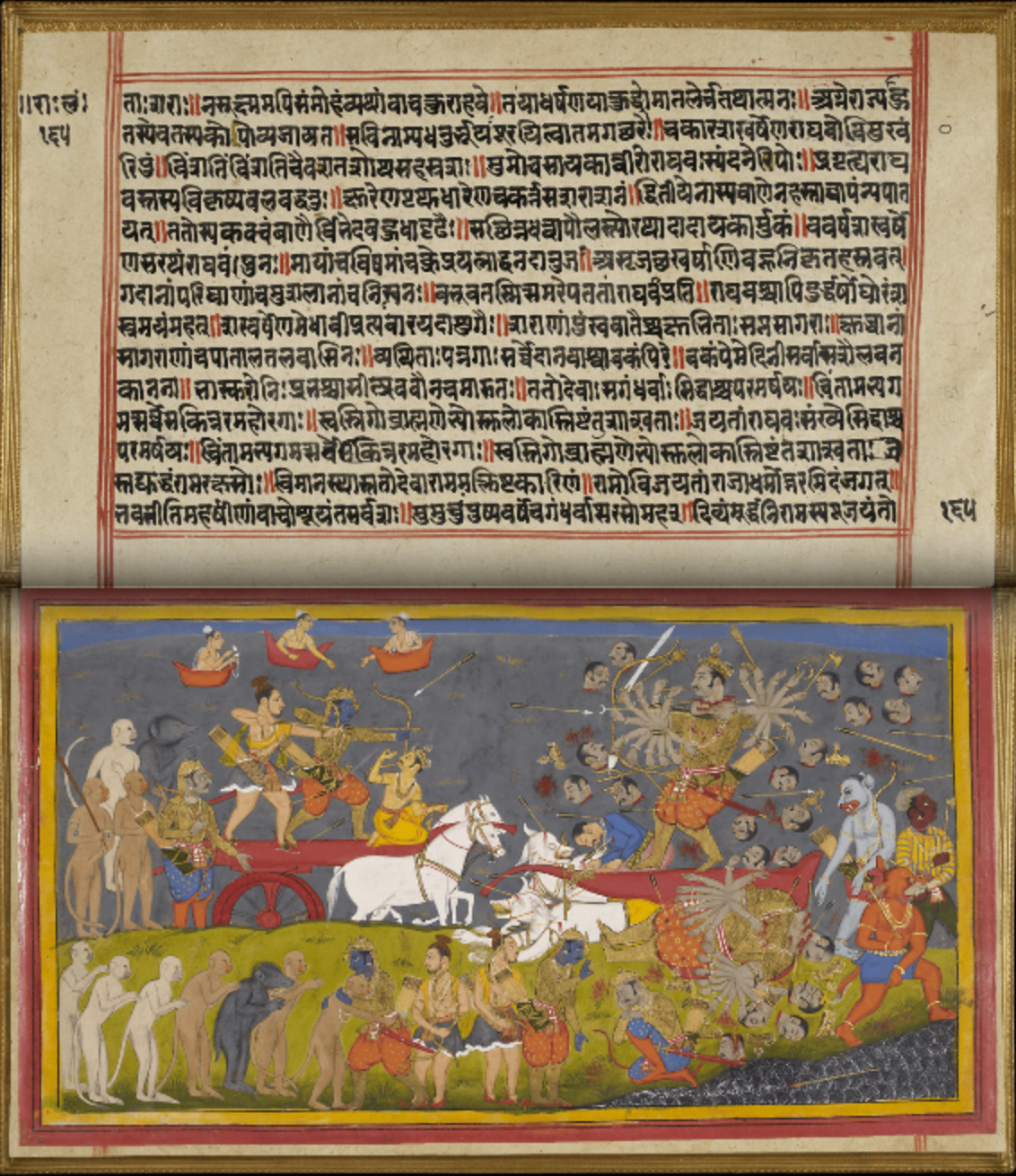
4 minute read
RAVANA: A GOOD FATHER OR A DREADFUL VILLAIN? RETELLING OF A GREAT MYTH
-Bhavya Shree
History is a branch of knowledge that has been taught to us since our childhood Have you ever wondered who would have written all the stories in history? Have you ever questioned yourself before believing the facts in the books of history? Most of us would answer no When we hear the very word "Ramayana", we are reminded of the adorable love story of Ram and Sita, and also the dreadful villain of this story, Ravana.
This image of Ramayana arises from Valmiki’s representation of the story You might be startled when you get to know the Jain version of Ramayana written by Sanghadasa Let’s discover other faces of epic history Sri Lanka was flourishing under the reign of its greatest ruler, Ravana.
This period is said to be the golden age of Sri Lanka Ravana was also a loyal devotee of Lord Shiva Mandodari was Ravana’s beloved wife, and the couple had a beautiful baby girl Ravana had an unshakeable faith in astrology When their daughter’s horoscope was written, the astrologers predicted, “The girl will be a great queen in the future, such that the world will remember her forever But the Sri Lankan kingdom will be ravaged if she stays with her father.”
Ravana grew anxious upon hearing the prophecy Janaka, the king of Mithila, had been yearning for a child for a long time With a heavy heart, Ravana decides to leave his baby in the kingdom garden of Janaka When Janaka discovers the baby girl lying in the garden, he considers her a blessing from Bhoomidevi (Mother Earth) and accepts her as his child He names the child Sita Sita grows into a beautiful woman with all the love and wealth showered on her Ravana ensures that his daughter is well cared for by King Janaka, from a distance When Sita attains maturity, a Swayamvaram (a royal practice in which a girl is allowed to choose her groom herself) is arranged Sita falls in love with Ram, the prince of Ayodhya, who is well-known for his courage, loyalty, and righteousness
After a few years of Ram and Sita’s wedding, Ram goes into exile in the forest with his wife and brother Lakshman at the request of his stepmother Kaikeyi Ravana, worried about the banishment of his inlaws and daughter from their kingdom, assigns his men to search for them so that he can offer them accommodation in his kingdom and ensure his daughter doesn’t suffer.
This is when Surpanakha, Ravana’s sister, sees Ram in the forest. Attracted by his striking looks, she tries to converse with him. Infuriated by a dark-skinned woman flirting with his brother, Lakshman chops off Surpanakha’s nose. Surpanakha reaches out to her brother, fabricating stories about the brothers to seek revenge.
Ravana was enraged by the ill-treatment of his sister and was concerned for his daughter's safety. He finds Sita in the forest. Sita was unwilling to trust Ravana despite giving his explanations, so he abducted her to Asoka Vana, said to be the largest garden in Asia, in Sri Lanka. Despite the royal treatment given to her, Sita inflicts pain on herself, unable to bear the separation from her husband.
Ram sets out to find Sita and receives help from various people on his way to Ravana’s place. (In Valmiki's Ramayana, Sugriva and Hanuman are portrayed with monkey faces, but critics believe they were ordinary South Indian men misrepresented due to their darker skin and native features.) People were sent from both sides for negotiation, but to no avail.
Finally, Ram declares war to bring back his wife and defeats Ravana. Unfortunately, the prophecy predicting the devastation of the Sri Lankan kingdom when Sita was near her father, comes true.
The Jain version of Ramayana answers a few puzzling questions that arose from Valmiki’s representation of Ramayana:
1. As per Valmiki’s Ramayana, Ravana abducts Sita out of attraction. So why didn’t he even touch her?
It’s because Sita was Ravana’s daughter, and he doesn’t intend to harm Sita. Moreover, Ravana was an upright king and devotee of lord Shiva, living a happy married life. There was no reason for him to get attracted to a young girl like Sita.
2. Were there men with monkey faces, as said in Valmiki’s Ramayana?
No, they were misrepresentations of South Indian men.
3. Has Ravana got 10 faces as portrayed in Valmiki’s Ramayana?
Ravana was good at multitasking and could do 10 jobs at a time. So, his mother gifted him a jewel. The reflection from this jewel could display him with 10 faces.
*Picture in Header : Rama slaying Ravana from a 17th century royal Mewar manuscript (Picture credit: Wikipedia)










